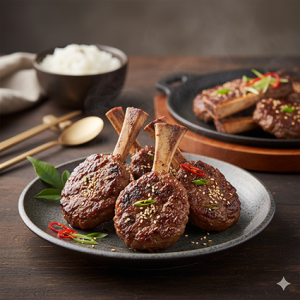
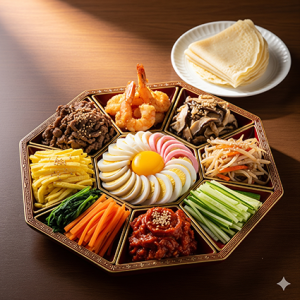
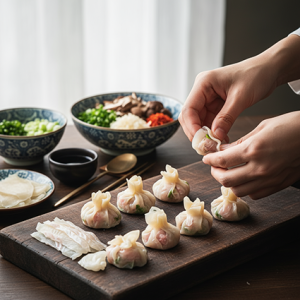
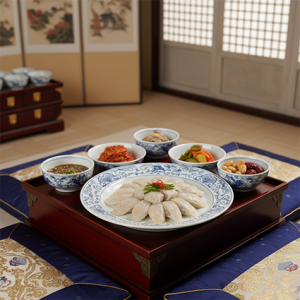
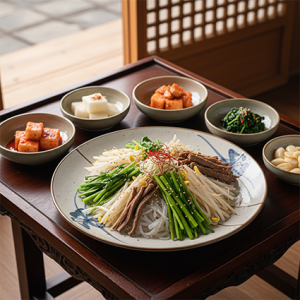
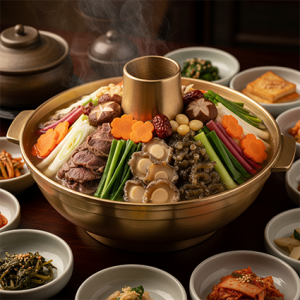
The dishes enjoyed by Korean royalty were royal cuisine, crafted with precious ingredients and elaborate cooking methods not readily available to ordinary citizens. Seasonal dishes were served according to the changing seasons, praying for the king’s health and longevity.
Below are ten representative dishes enjoyed by Korean royalty.
- Sinseonro: A hotpot dish made with various meats (beef, pheasant, etc.), seafood (abalone, sea cucumber, etc.), vegetables, mushrooms, and more. It is typically served warm over a charcoal fire in the center. The variety of precious ingredients was considered a nutritious meal that replenished the king’s energy.
- Gujeolpan: A nine-compartment wooden bowl filled with various ingredients (meat, seafood, vegetables, etc.) and served wrapped in wheat pancakes. It was a symbolic royal dish, combining aesthetic beauty and nutrition with the harmony of colors and flavors. 3. Steamed Abalone: Abalone, so precious it’s called the “gold of the sea,” is steamed and seasoned with soy sauce, honey, and sesame oil. It was often served as a nutritious meal to pray for the king’s recovery and longevity.
- Tarakjuk: This porridge is made by grinding soaked rice, boiling it, and then adding milk. Highly nutritious and easily digestible, it was considered a precious royal nutritious dish.
- Tteokgalbi: Finely minced beef, seasoned, attached to ribs, and grilled. The minced meat is characteristically used to make it easier for the king to consume.
- Eomandu: These dumplings are made with thinly sliced fish meat instead of flour. This elaborate and sophisticated dish is said to have been particularly favored by King Injo.
- Tangpyeongchae: This dish is made with a mixture of green bean jelly, water parsley, bean sprouts, and beef. It is said that King Yeongjo ordered this dish to bring harmony to the feuding factions. 8. Yukhoe: This is a dish of raw, seasoned beef. King Yeonsangun, in particular, is said to have enjoyed horse meat yukhoe, believing it to be good for stamina.
- Tteokbokki: Unlike today’s spicy tteokbokki, this was a royal dish made with soy sauce, stir-fried rice cakes, beef, mushrooms, and other ingredients. Both rice cakes and beef were rare ingredients, making them difficult for commoners to access.
- Onmyeon: This dish, whose long noodles symbolized longevity, was a popular dish at banquets. Made with boiled buckwheat noodles and topped with broth and garnishes, it was a staple dish at banquets.
In addition, the king’s table featured two basic types of rice—white and red bean rice—along with various soups, sauces, kimchi, and over a dozen side dishes. Seasonal dishes were added to complement the meal.